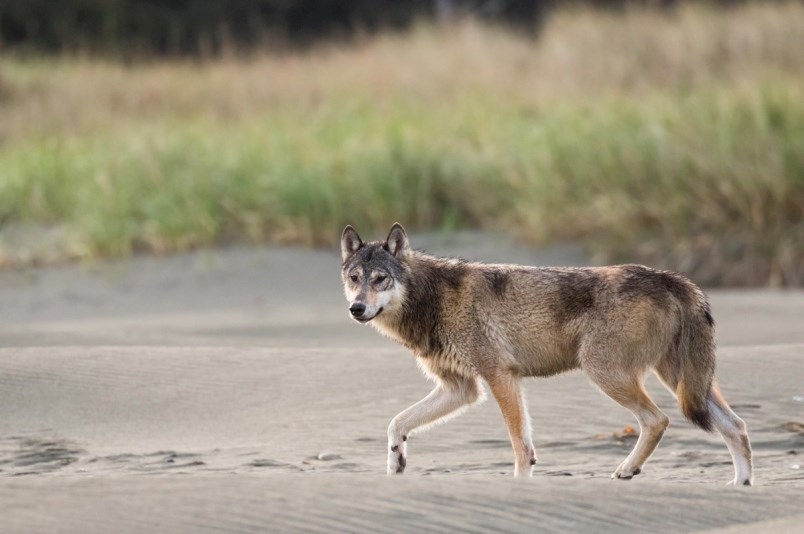An Island hunter who has said on social media that she wants to kill an entire pack of wolves has sparked outrage and calls for stricter provincial rules for hunting the apex predator.
Jacine Jadresko recently posted two selfies holding dead wolves on her Instagram account, Inked Huntress, which was made private in the past week.
In a post, Jadresko says she was made aware of “a problem wolf pack that was snatching people’s cats and dogs.” She said she set traps, and has caught two wolves.
“Full pack removal is always the goal, so now we adjust and reset,” she wrote in the post.
Jadresko has an international reputation as a trophy hunter and was the subject of a 2016 Netflix documentary called The Women Who Kill Lions. In the film, Jadresko says she has killed 29 different species, including an African buffalo and a grizzly bear, in just a year and a half. She has received countless death threats for sharing photos of her kills online.
Wildlife photographer Cheryl Alexander shared screenshots of Jadresko’s photos with the dead wolves on her Facebook page dedicated to Takaya, the lone wolf who lived on Discovery Island for years.
The post drew nearly 1,000 comments, many of which expressed outrage.
To Alexander, Jadresko is a symbol of a broader problem — that the province’s regulations for hunting wolves, the only big game that does not require a tag, are too lax.
On Vancouver Island, a hunter is allowed to kill three wolves per year, but there’s no limit on how many wolves a trapper can take, according to the Ministry of Forests, Lands, Natural Resource Operations and Rural Development.
All hunters and trappers who kill a wolf on Vancouver Island must report it to the province, although there are areas of B.C. where that’s not required.
In a statement, the ministry said because wolves are difficult to trap and their pelts are not particularly valuable, the number of animals killed through trapping is typically low.
An average of 18 wolves have been killed on the Island through trapping over the past five years, out of an estimated 250 animals, the ministry said.
But Alexander said there’s not enough known about wolf populations to support the province’s management approach.
“Anyone can decide that wolves are a problem, or just for the heck of it go shoot a wolf — or as many wolves in most areas of the province as they want — without any solid scientific basis for that,” she said.
Alexander is pushing for a moratorium on recreational wolf hunting, as well as compulsory reporting of wolf kills in all areas of the province. She also wants the province to require hunters to buy tags to kill wolves.
The hunter who legally shot and killed Takaya wasn’t out looking for wolves at the time, Alexander said, and if a tag were required, he might not have been able to kill the wolf legally.
“It brings a level of accountability into the process of hunting wolves,” she said.
Most hunters who kill wolves do so to protect declining deer populations, said Jesse Zeman, director of fish and wildlife restoration for the B.C. Wildlife Federation.
But Alexander takes issue with the idea that wolves are at fault for changes to the deer population, pointing to habitat degradation as the culprit.
Katrine Conroy, minister of Forests, Lands, Natural Resource Operations and Rural Development, said in a statement that Jadresko is taking advantage of a loophole in hunting regulations to boost her profile.
“We will be working with the B.C. Wildlife Federation and the B.C. Trappers Association to change the regulations to close this loophole so this type of behaviour is prevented in the future,” she said.
Jadresko declined an interview, but said in a message that her recent kills are not trophy or recreational hunting. “We are not trying to hunt an entire pack of wolves in East Sooke,” she wrote.
“The wolves in question have chased and cornered a human and have attacked and killed multiple pets.”
She said she has a trapping licence and permission from the property owners to trap wolves on their property, and that her partner is of Métis heritage, so trapping and using pelts is part of his culture.
She has also reported all trapping activities to conservation officers, she said.
Read more from the Times Colonist



